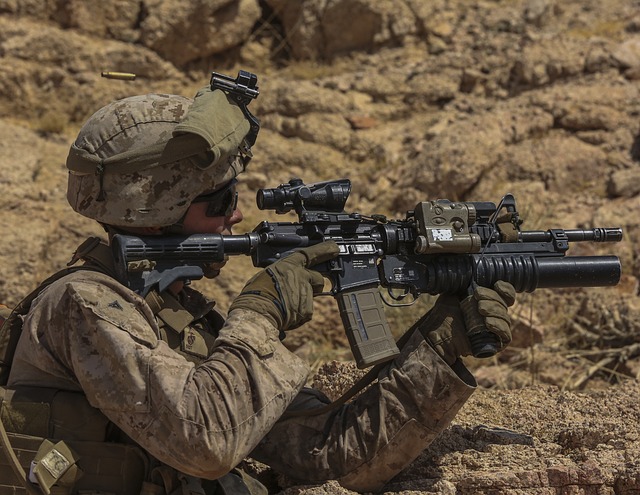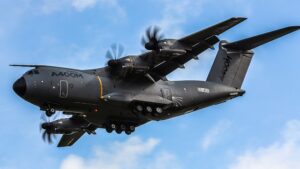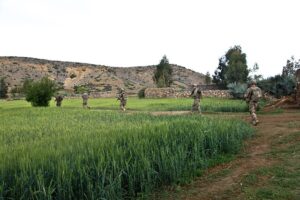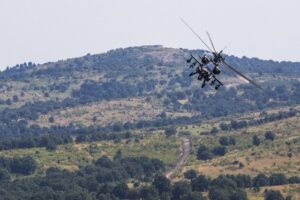
The 101st Airborne Division Flag, historically known as "The Ranger Flag" or "The Screaming Eagle," is a symbol of the division's storied history and the valor displayed by its members since World War II. Originating from the D-Day operation on June 6, 1944, this flag represents the unit's specialized airborne capabilities, embodying the motto "Death from Above" and reflecting the division's commitment to valor, sacrifice, and courage. It has been a fixture in various global conflicts, including those in the Middle East, and continues to stand as a reminder of the unwavering courage and spirit of American paratroopers, both past and present. The flag's design features the division's patch with an eagle holding a parachute, the words "Honor, Courage, Commitment," and the American flag, all elements carefully chosen to represent the unit's values and traditions. It serves as a testament to the division's legacy, inspiring current soldiers and ensuring the continuity of its honorable tradition worldwide. The 101st Airborne Division Flag is an emblem of bravery, discipline, and military heritage, encapsulating the ethos and lineage of one of America's most elite units and remaining a symbol of American military might and pride.
The 101st Airborne Division Flag stands as a beacon of valor and heritage, its rich tapestry of symbolism woven into the fabric of American military history. This article delves into the profound significance of this emblem, from its origins to its modern-day role in ceremonial practices and public displays. We will explore the historical context that birthed its design, the deep meanings behind each element captured within its colors, and the protocols governing its dignified hoisting. Beyond the ceremonial aspect, we will guide you through the technicalities of flagpole selection and maintenance to ensure the 101st Airborne Division Flag is displayed with honor and respect. Finally, we will reflect on the legacy this flag carries, its role in pivotal historical moments, and the efforts to keep its history alive for future generations. Join us as we pay homage to a symbol that represents not just a division, but the indomitable American spirit.
- The Symbolic Significance of the 101st Airborne Division Flag
- – Origins and Historical Context
- – Design Elements and Their Meanings
- – The Flag's Role in Military Tradition
The Symbolic Significance of the 101st Airborne Division Flag

The 101st Airborne Division Flag carries a rich tapestry of American military history and symbolizes the valor, sacrifice, and commitment of its namesake unit. Known colloquially as “The Ranger Flag,” it was first unfurled during World War II in the early hours of D-Day, June 6, 1944, over the drop zone in Normandy, France. This flag serves as a tangible emblem of the division’s motto, “Death from Above,” representing the airborne capabilities that distinguish the 101st Airborne Division from other units. It has since become an enduring symbol not only of the division’s history but also of the unwavering courage and spirit of the American paratroopers who have followed in the footsteps of their World War II forebears. The flag’s presence at various conflicts, including those in the Middle East, underscores the division’s ongoing legacy and its role as a cornerstone of American airborne forces. The 101st Airborne Division Flag is a potent symbol that honors the past while inspiring current and future generations of soldiers who carry on the division’s proud tradition.
– Origins and Historical Context

The tradition of hoisting flags on flagpoles and flagstaffs dates back to ancient times when civilizations used them as a means of signaling, navigation, or claiming territory. Over time, this practice evolved into a symbolic gesture representing national pride, allegiance, and historical continuity. In the context of the United States, the significance of flags became particularly pronounced during the 20th century, with one of the most poignant examples being the 101st Airborne Division Flag, also known as the “Screaming Eagle.” This flag, adopted by the division in 1943, carries a rich history that stems from the valor and sacrifices made by its members during World War II. It symbolizes the division’s readiness to deploy swiftly into combat or emergency situations, earning it the moniker “America’s Guard of Honor.” The 101st Airborne Division Flag has since become a powerful emblem of American military prowess and the indomitable spirit of its troops, often hoisted in ceremonies and displays across the nation to honor their legacy. As a result, this flag serves as a tangible link to the division’s storied past and continues to inspire those who have followed in the footsteps of its brave soldiers.
– Design Elements and Their Meanings

The 101st Airborne Division Flag holds a significant place in American military history, symbolizing both courage and readiness. Its design elements convey a rich tapestry of meaning for those who understand their significance. The flag’s dominant feature is the division patch, which depicts an eagle clutching a parachute, reinforcing the unit’s specialization in airborne operations. Beneath this emblem, the words “Honor, Courage, Commitment” encircle the patch, articulating the core values that define the 101st Airborne Division’s ethos. These words serve as a daily reminder of the virtues expected from its soldiers. Additionally, the flag incorporates the American flag in its canton, emphasizing the unit’s unwavering allegiance to the United States and its values. The combination of these elements creates a powerful visual representation that serves to inspire, unite, and remind all who see it of the division’s storied past and ongoing commitment to defense and service.
The flag’s color scheme is also deliberate and symbolic; the dominance of olive drab reflects the division’s identity as an airborne infantry unit, distinguishing it from other branches of the military. The bold colors are not only visually striking but also represent the readiness of the division to deploy at a moment’s notice, in any conditions. This design is not merely aesthetic; it serves as a visual language that encapsulates the spirit and tradition of the 101st Airborne Division, ensuring its legacy endures through each iteration hoisted on flagpoles and flagstaffs around the world.
– The Flag's Role in Military Tradition

The 101st Airborne Division Flag holds a revered place within military tradition, symbolizing courage, discipline, and a legacy of airborne operations. This iconic flag has been hoisted on flagpoles and flagstaffs in countless military installations worldwide, serving as a constant reminder of the division’s storied history and the valorous acts of its soldiers. Its presence is not merely ceremonial; it anchors the ethos and lineage of one of the most elite units in the United States Army. The flag has been a part of significant historical moments, from the early days of World War II to recent conflicts, where its image has become synonymous with the rapid deployment capabilities and high-stakes missions that define the 101st Airborne Division. It is a rallying point for troops, a beacon of pride, and a tangible connection to their comrades who have gone before them, each hoisting a replica as they take their place in the division’s unbroken chain of service and sacrifice.
Moreover, the 101st Airborne Division Flag is often raised during ceremonial events and commemorations, marking moments of honor and solemnity. It represents the division’s commitment to readiness and the highest standards of military excellence. The act of hoisting this flag on flagpoles across various bases not only pays homage to the division’s past but also inspires present and future generations of soldiers who aspire to uphold its esteemed reputation. The flag’s consistent display is a testament to the division’s ongoing contributions to national defense and the collective memory of its members, ensuring that its storied tradition continues to be honored and upheld through each new generation that serves under its emblem.
The 101st Airborne Division Flag stands as a potent symbol of American valor and tradition, its origins steeped in history and its design rich with meaning. As the article has explored, this emblem, synonymous with the storied 101st Airborne Division, encapsulates the spirit of the unit’s members and their pivotal roles in various conflicts. From its historical context to the significance of each design element, the flag has etched its identity within military culture, serving as a reminder of the division’s legacy and the sacrifices made by its troops. Displayed proudly on flagpoles and flagstaffs worldwide, the 101st Airborne Division Flag continues to be a tangible representation of the values it embodies: courage, loyalty, and commitment. It is a visual tribute that honors the past while inspiring future generations to uphold these principles in their own endeavors.






